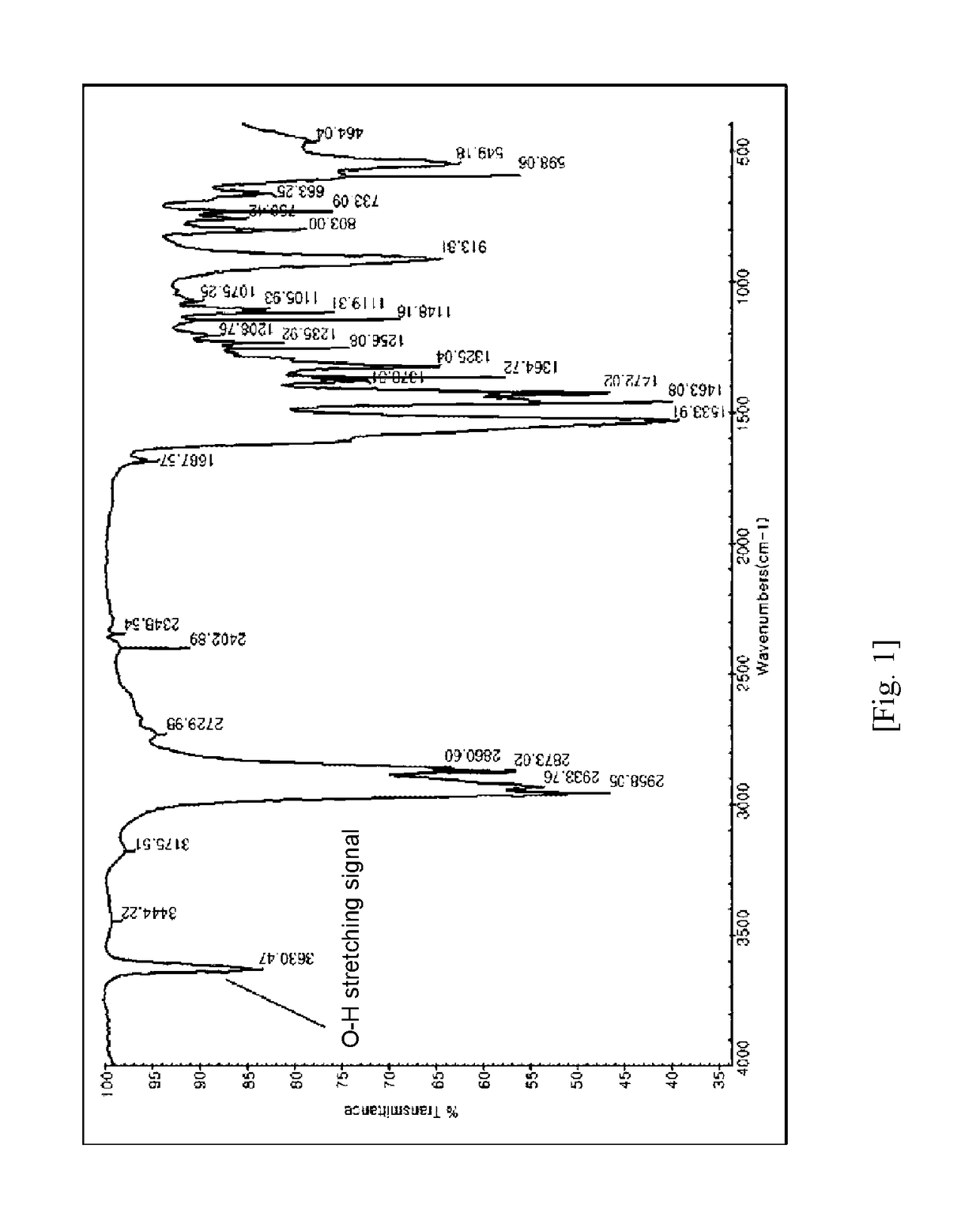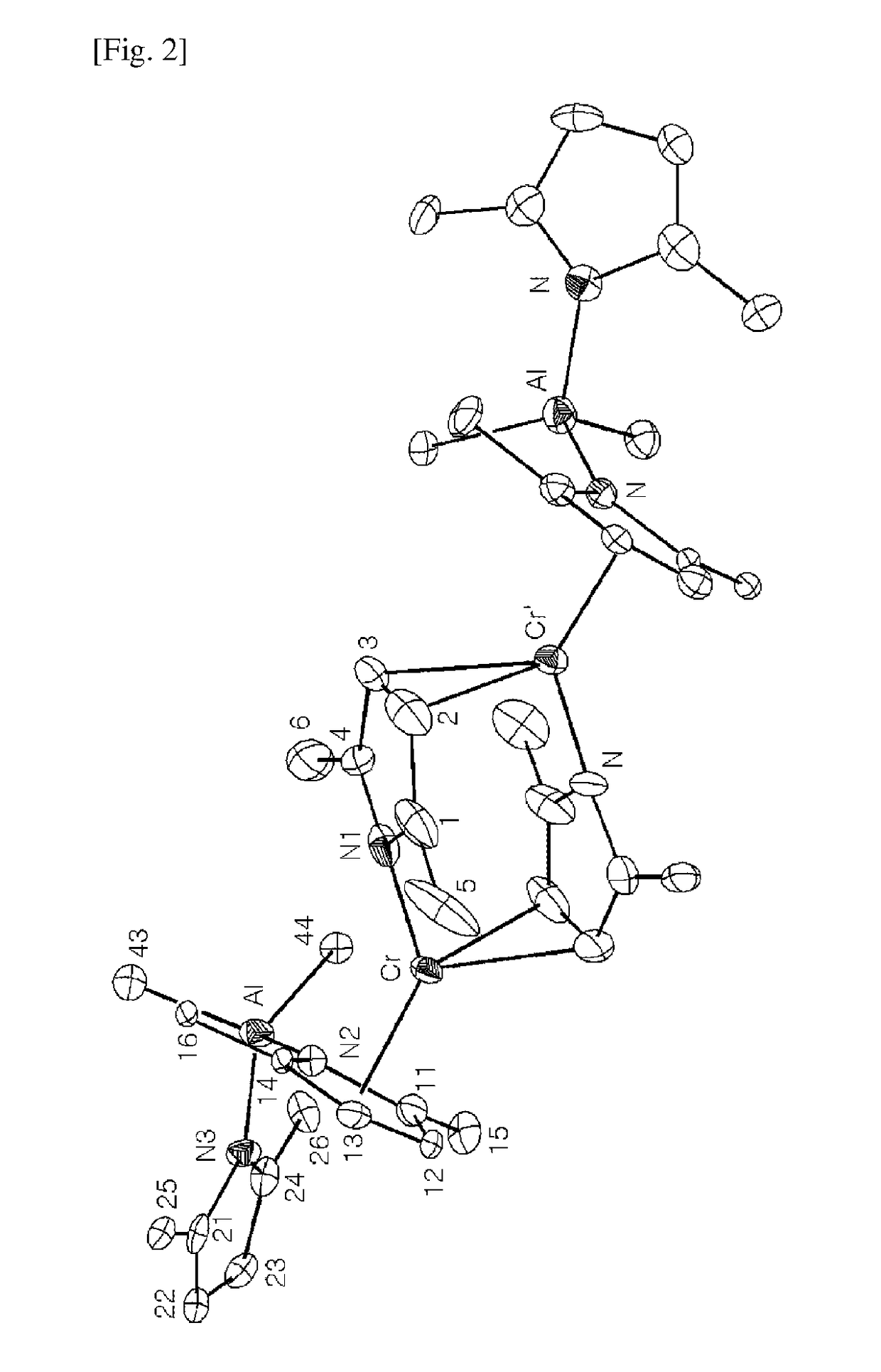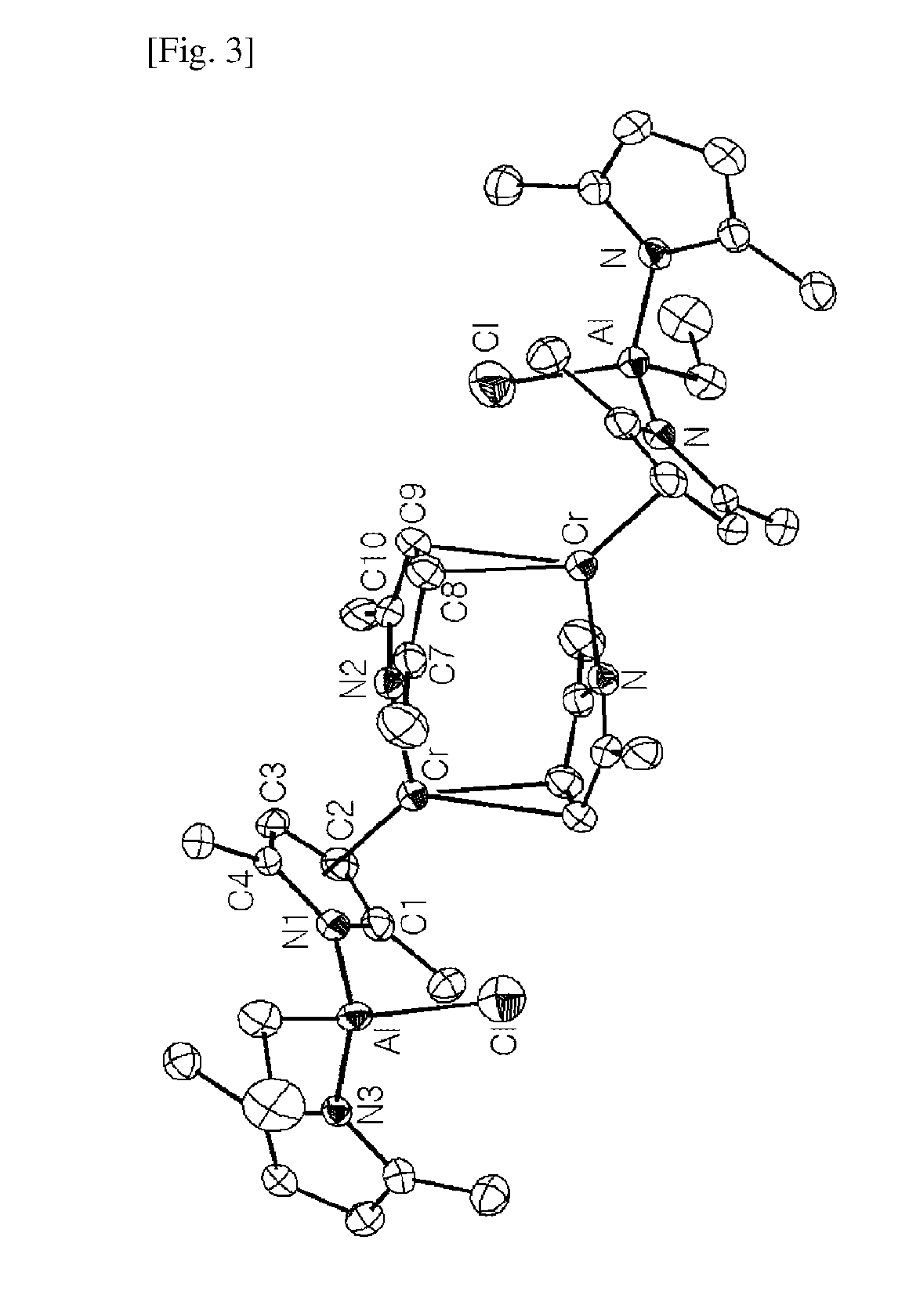Chromium compound, catalyst system including the same, and method for trimerizing ethylene using the catalyst system
- Summary
- Abstract
- Description
- Claims
- Application Information
AI Technical Summary
Benefits of technology
Problems solved by technology
Method used
Image
Examples
preparation example 2
um Compound Represented by Formula 1b
[0148]A navy blue solid-type chromium compound represented by Formula 1b was prepared in the same manner as in Preparation Example 1, except that 2-ethylbutyric acid (16.9 mmol) was used instead of 2-ethylhexanoic acid (C, 48.52; and H, 7.85, and, with respect to {CH3CH2CH(CH2CH3)CO2}2Cr(OH), C, 48.15; and H, 7.75).
[0149]The compound prepared according to Preparation Example 2 was dissolved in benzene and then the molecular weight thereof was measured using a freezing point depression method. As a result, the molecular weight was 3330 and about 11 {CH3CH2CH(CH2CH3)CO2}2Cr(OH) molecules was present in benzene as an assembly (i.e., [{CH3CH2CH(CH2CH3)CO2}2Cr(OH)]11).
[0150]As an elemental analysis result, the structure of the compound prepared according to Preparation Example 2 was identical to that of CH3CH2CH(CH2CH3)CO2}2Cr(OH), not including a water molecule.
[0151]When the compound prepared according to the Preparation Example 2 was dissolved in x...
preparation example 3
um Compound Represented by Formula 1c
[0152]2-ethylhexanoic acid (2.44 g, 16.9 mmol) was fed into a 1-neck flask, and then NaOH (0.68 g, 16.9 mmol) dissolved in distilled water (13 ml) was added thereto, thereby preparing sodium 2-ethyl hexanoate. Subsequently, methylcyclohexane (7 ml) was additionally added thereto to form two phases. While stirring the resultant mixture at 95° C., hydrated chromium (III) chloride (CrCl3.H2O, 1.50 g, 96%, 5.40 mmol) dissolved in distilled water (1 ml) was slowly added thereto. A reaction was rapidly performed and a product was dissolved into an organic layer. After allowing reaction for 2 hours, an aqueous layer became transparent and all of generated products were dissolved into an organic layer. Accordingly, the organic layer appeared viscous navy blue and an aqueous layer became transparent.
[0153]The pH of the aqueous layer was neutral. In addition, it could be confirmed that, when considering that the weight of precipitated silver chloride (AgCl...
preparation example 4
o-Pyrrole Compound (B1)
[0157]Under an inert atmosphere (nitrogen), triethylaluminum (7.20 g, 63.1 mmol) dissolved in toluene (60 ml) was fed into a 1-neck flask, and then 2,5-dimethylpyrrole (1.50 g, 15.8 mmol) was additionally added thereto, followed by stirring at room temperature for five hours. Next, toluene and unreacted triethylaluminum were removed therefrom by vacuum distillation (0.3 mmHg, 70° C.), thereby obtaining 2.80 g of a pyrrole aluminum compound (1-(diethylalumino)-2,5-dimethylpyrrole) in which N—Al covalent bonds were formed. According to this method, an alumino-pyrrole compound (B1) which had the structure represented by Formula 5 in which R2 was an ethyl group, R3 and R6 were methyl groups, R4 and R5 were hydrogen was prepared. A result of 1H NMR analysis is as follows: yield: 99%, 1H NMR (C6D6): ä 5.51 (s, 2H, Ar—H), 2.01 (s, 6H, CH3), 1.35 (t, J=8 Hz, 6H, CH3), 0.35 (q, J=8 Hz, 4H, CH2) ppm}.
PUM
| Property | Measurement | Unit |
|---|---|---|
| Catalytic activity | aaaaa | aaaaa |
| Molar ratio | aaaaa | aaaaa |
Abstract
Description
Claims
Application Information
 Login to View More
Login to View More - R&D
- Intellectual Property
- Life Sciences
- Materials
- Tech Scout
- Unparalleled Data Quality
- Higher Quality Content
- 60% Fewer Hallucinations
Browse by: Latest US Patents, China's latest patents, Technical Efficacy Thesaurus, Application Domain, Technology Topic, Popular Technical Reports.
© 2025 PatSnap. All rights reserved.Legal|Privacy policy|Modern Slavery Act Transparency Statement|Sitemap|About US| Contact US: help@patsnap.com



